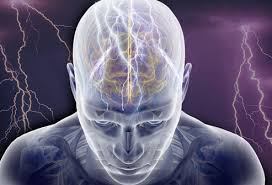Gabapentin, a medication initially developed as an antiepileptic drug, has become a cornerstone in modern epilepsy therapy. Over the years, extensive research has elucidated the mechanism of action of gabapentin in managing seizures, leading to its widespread use and efficacy in treating epilepsy. This article aims to explore the evolution of gabapentin in epilepsy treatment, its pharmacological properties, clinical effectiveness at different dosages, safety considerations, and the ongoing innovations shaping the future of gabapentin therapy for individuals with epilepsy.
Introduction to Gabapentin in Epilepsy Treatment
Featuring Gabapentin in the lineup of modern epilepsy treatments is like having a reliable friend who always has your back during a game of medical tag. But what’s the story behind this trusty sidekick’s role in managing seizures?
History and Development of Gabapentin for Epilepsy
Gabapentin didn’t just stumble into the epilepsy scene; it had to earn its stripes. Initially designed to treat pain, this pill found its true calling in epilepsy therapy by showing off its skills in reducing seizures and improving quality of life for patients.
Understanding the Role of Gabapentin in Seizure Management
Picture Gabapentin as a seasoned conductor orchestrating brain activity to prevent seizures. By stepping in and calming down the brain’s unruly electrical signals, this pill helps keep those unexpected neuron parties in check.
Mechanism of Action of Gabapentin in Managing Seizures
Brace yourself for a crash course in Gabapentin’s seizure-squelching superpowers. How exactly does this pill work its magic behind the scenes?
Neurotransmitter Modulation by Gabapentin
Think of Gabapentin as the cool-headed negotiator in the brain, smoothing over disputes between neurotransmitters to maintain peace and order. By tweaking these chemical messengers, Gabapentin helps prevent those electrical storms that lead to seizures.
Impact of Gabapentin on Excitatory Pathways in the Brain
Gabapentin is like the guardian angel of excitatory pathways, swooping in to keep things from spiraling out of control. By blocking certain channels that amp up brain activity, Gabapentin ensures that neurons stay in line and don’t throw any chaotic parties.
Gabapentin 100mg is used to treat epilepsy. It is also used to alleviate nerve pain caused by a range of conditions, including diabetes and shingles. Nerve pain can also arise after an injury. Gabapentin is used to treat epilepsy by reducing abnormal electrical activity in the brain.
Clinical Efficacy of Gabapentin 100mg and 800mg in Epilepsy Therapy
Let’s dive into the nitty-gritty of Gabapentin’s track record in the real world. How has this pill performed when put to the test in clinical settings?
Key Studies Demonstrating Gabapentin’s Effectiveness in Seizure Control
In the world of epilepsy research, Gabapentin has strutted its stuff in various studies, showing off its ability to wrangle seizures and bring some much-needed stability to patients’ lives. It’s like the MVP of the seizure control game.
Comparative Analysis of Gabapentin 100mg and 800mg in Clinical Trials
When it comes to Gabapentin dosages, does size really matter? Clinical trials have delved into the effectiveness of both the 100mg and 800mg versions, shedding light on which dose packs the mightier punch in taming those unruly brain waves.
Dosage and Administration Guidelines for Gabapentin in Epilepsy
It’s time to get down to the practical details of using Gabapentin in epilepsy treatment. How should this pill be taken, and what should both patients and doctors keep in mind along the way?
Optimal Dosage Regimens for Different Types of Epilepsy
Like a tailored suit, Gabapentin dosages should fit each patient’s unique needs. From petite portions to hefty helpings, finding the right dose for different types of epilepsy is key to maximizing this pill’s potential in keeping seizures at bay.
Considerations for Titration and Monitoring during Gabapentin Therapy
Navigating the Gabapentin journey requires a steady hand and a watchful eye. When it comes to titrating doses and keeping tabs on how patients are responding, a careful balance of adjustment and observation is crucial for a smooth sailing treatment experience.
Safety Profile and Side Effects of Gabapentin in Epilepsy Patients
When it comes to the safety profile of Gabapentin in epilepsy patients, it’s generally considered well-tolerated. However, like most medications, it does come with some common side effects. These can include dizziness, drowsiness, and coordination problems. But hey, what’s a little dizziness when it comes to managing seizures, right?
Common Adverse Reactions Associated with Gabapentin Use
Some of the most common adverse reactions associated with Gabapentin use in epilepsy patients include fatigue, weight gain, and even some gastrointestinal issues. It’s like Gabapentin is saying, “I’ll help you with your seizures, but in return, you might feel a bit tired and maybe crave an extra snack or two.”
Risk of Drug Interactions and Precautions for Epilepsy Patients
As with any medication, there’s always a risk of drug interactions to consider. Epilepsy patients taking Gabapentin should be cautious about potential interactions with other medications, especially those affecting the central nervous system. It’s like Gabapentin is the popular kid at school; everyone wants to be friends, but not everyone is a good influence.
Gabapentin 800mg is a drug that is often used to treat specific types of seizures and nerve pain. It is classified as an anticonvulsant or antiepileptic medication. Gabapentin Tablets are also used to treat postherpetic neuralgia (nerve pain that develops after an incident of shingles) and restless legs syndrome. The dosage of gabapentin Tablets varies depending on the illness being treated, the patient’s medical history, and their response to the medication. The 800mg dose of gabapentin tablet is relatively high, and it is critical to take the prescription exactly as advised by your doctor.
Comparing the Efficacy of Gabapentin 100mg vs 800mg in Seizure Control
Now, let’s talk about the nitty-gritty – comparing the effectiveness of Gabapentin at different dosages. Studies have looked into whether a smaller dose, like 100mg, is as effective as a larger dose, say 800mg, in controlling seizures. What a dilemma – do you go big or go home when it comes to Gabapentin?
Head-to-Head Studies Evaluating the Difference in Effectiveness
Head-to-head studies have delved into this question, looking at whether higher doses of Gabapentin truly offer better seizure control compared to lower doses. It’s like a showdown between the Gabapentin dosages – who will come out on top in the battle against seizures?
Factors Influencing the Choice Between Gabapentin 100mg and 800mg
When it comes down to choosing between Gabapentin 100mg and 800mg, factors like individual patient response, tolerability, and seizure frequency play a significant role. It’s almost like a tailored suit – finding the perfect fit for each epilepsy patient’s unique needs and preferences.
Future Directions and Potential Innovations in Gabapentin Therapy for Epilepsy
Looking ahead, the future of Gabapentin therapy for epilepsy holds promise for exciting innovations and advancements. Researchers are exploring new formulations and delivery methods to make Gabapentin even more effective and convenient for patients. It’s like Gabapentin is leveling up, ready to take on seizures in the most efficient way possible.
Emerging Research on Novel Gabapentin Formulations and Delivery Methods
Excitingly, emerging research is focusing on novel formulations and delivery methods for Gabapentin, potentially offering enhanced efficacy and improved patient outcomes. It’s like Gabapentin is getting a makeover, stepping into the spotlight with a fresh new look to combat seizures.
Exploring Combination Therapies and Personalized Approaches with Gabapentin
Additionally, researchers are delving into the realm of combination therapies and personalized approaches with Gabapentin, tailoring treatment strategies to individual patient needs. It’s like Gabapentin is becoming a versatile player in the epilepsy treatment game, adapting to each patient’s unique situation for optimal seizure management.In conclusion, Gabapentin, available in both 100mg and 800mg formulations, continues to play a vital role in the treatment of epilepsy. With its proven efficacy, manageable side effects, and evolving research, gabapentin remains a pillar in the arsenal of medications used to control seizures and improve the quality of life for individuals with epilepsy. As further advancements and refinements in gabapentin therapy emerge, it is clear that this medication will continue to be a crucial component in modern epilepsy treatment regimens.




